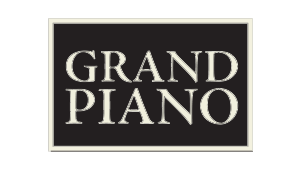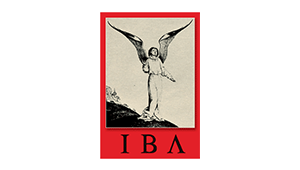Galliard
Galop
Gamba
German dance
Gigue
Giocoso
Giusto
Glissando
Glockenspiel
Gong
Grand opéra
Grave
Grazioso
Gregorian chant
Guitar
Habanera (= Havanaise)
Harmonica
Harmoniemusik
Harmonium
Harmony
Harp
Harpsichord
Haute-contre
Heldentenor
Horn
Hornpipe
Humoresque (= Humoreske)
Hymn
Impromptu
Improvisation
Instrumentation
Interlude
Intermède
Intermedio
Intermezzo
Interval
Intonation
Invention
Istesso tempo, l’
G is a note in the musical scale (= French, Italian: sol).
The galliard is a courtly dance of the late 16th and early 17th century in triple metre usually following a slower duple-metre pavan. The two dances are often found in instrumental compositions of the period, sometimes in suites.
The galop is a quick dance in duple metre, one of the most popular ballroom dances of the 19th century. The dance appears as a parody in Offenbach’s operetta Orpheus in the Underworld in a can-can.
Gamba (Italian: leg) is in English used colloquially to designate the viola da gamba or leg-viol. This bowed string instrument was popular from the 16th until the middle of the 18th century and held downwards, in a way similar to that of the modern cello (as opposed to the viola da braccio or arm-viol, the instrument of the violin family held on the arm or shoulder).
The German dance (= German: Deutsche, Deutscher Tanz) describes generally the triple-metre dances of the late 18th and early 19th century: the Ländler and the Walzer (waltz). There are examples of this dance in the work of Beethoven and Schubert.
The gigue (= Italian: giga; English: jig) is a rapid dance normally in compound duple metre (the main beats divided into three rather than two). The gigue became the accepted final dance in the Baroque instrumental suite.
Giocoso (Italian: jocular, cheerful) is sometimes found as part of a tempo instruction to a performer, as in allegro giocoso (‘fast and cheerful’). The same Italian adjective is used in the descriptive title of Mozart’s opera Don Giovanni, a dramma giocoso.
Giusto (Italian: just, exact) is found in tempo indications: for example, allegro giusto (as in the last movement of Schubert’s ‘Trout’ Quintet) or tempo giusto (sometimes, as in Liszt, indicating a return to the original speed of the music after a freer passage).
Derived from the French glisser, to slide, the Italianised word is used to describe sliding in music from one note to another. On the harp or the piano this is achieved by sliding the finger or fingers over the strings or keys; it can be achieved similarly on bowed string instruments and by other means on the trombone, clarinet, French horn and pedal timpani, among others.
The glockenspiel is a percussion instrument similar in form to the xylophone, but with metal rather than wooden bars for the notes. The instrument appeared only gradually in the concert hall and opera house and is found in Handel’s oratorio Saul and elsewhere. Mozart made famous use of the glockenspiel in Die Zauberflöte (‘The Magic Flute’), where it is a magic instrument for the comic bird-catcher Papageno. It is now a recognised if sparingly used instrument in the percussion section of the modern orchestra.
The gong is a percussion instrument originating in the East. In the modern orchestra it is usually found in the form of the large Chinese tam-tam. The gong appears in Western orchestral music in the late 18th century; sets of gongs of varying size add exotic colour to Puccini’s oriental operas Madama Butterfly and Turandot.
French grand opéra developed in the 19th century, notably with Meyerbeer, although it had historical precedent as early as Lully in the late 17th century, with the then demand for elaborate spectacle. The usual form of grand opéra is as a five-act work, making use of grandiose effects on a large scale. The genre was of considerable social and cultural importance in Paris, with a consequent effect on techniques of staging, which were often innovative and had to be impressive. It had influence outside France on composers such as Wagner and Verdi, specifically in the former’s Tannhäuser in the version arranged for Paris and the latter’s spectacular Aida. Examples of the genre from Meyerbeer include Les Huguenots (‘The Huguenots’) and L’Africaine (‘The African Maid’).
Grave (Italian: slow, solemn) is used as an indication of tempo and mood, meaning slow and serious.
Grazia (Italian: grace) forms the Italian adjective grazioso, used as an indication of expression and of tempo, particularly in the 18th century.
(see ‘Plainchant’)
The modern concert guitar is a plucked string instrument generally with six strings. It has a long history, in one form or another. In more recent times it became popular in Vienna in the early 19th century with the work of the Italian composer and guitarist Mauro Giuliani and in Paris with the Catalan Fernando Sor. In Spain it is, of course, the national instrument. The player Andrés Segovia had a strong influence on the form of the modern guitar, the repertoire of which now includes fine concertos by the composers Joaquín Rodrigo, Manuel Ponce, Villa-Lobos, Castelnuovo-Tedesco and others.
The letter H is used in German to denote the English note B, while B in German signifies the English B flat. In the use of the letters of a word to form a musical motif, the presence of H allows a complete musical version of the name BACH (B flat – A – C – B = German: B – A – C – H), used by various composers, including Liszt. The Russian composer Dmitry Shostakovich used a musical cryptogram derived from the first letters of his name in German, DSCH, which becomes D – Es (= E flat) – C – H. This occurs in a number of his works as a kind of musical signature.
The habanera is a Cuban dance from Havana, later introduced to Spain. One of the most famous examples is found in Bizet’s Spanish opera Carmen, where Carmen herself sings a seductive habanera. Ravel includes one in his Rapsodie espagnole and also wrote a Vocalise en forme de habanera, while Debussy also makes use of the dance’s characteristic rhythm.
The Western harmonica or mouth-organ is an invention of the early 19th century, inspired by the ancient Chinese bamboo mouth-organ, the sheng. The 20th-century chromatic harmonica, of which Larry Adler has been a leading exponent, has inspired a number of composers, including Vaughan Williams, who wrote a Romance for harmonica and orchestra.
Harmoniemusik is music for wind band. In its more limited sense the term is used to signify music for wind bands or wind ensembles in the service of the nobility from the middle of the 18th century to the end of the third decade of the 19th century, and their popular counterparts. The Harmonie, the band itself (which varied in number from a duo to the frequently found sextet or octet or to an even larger number of players) had its counterpart in France and in England, as well as its successors among emigrants to the United States of America.
The harmonium, developed in the early 19th century from experiments in the last quarter of the century before, is a keyboard instrument that produces its sounds by means of air from bellows passing through free reeds—metal tongues that are made to vibrate. The instrument has a relatively small classical repertoire, its use either domestic or as a cheap substitute for the church organ. Dvořák wrote bagatelles for two violins, cello and harmonium, and Schoenberg made some use of the harmonium in chamber arrangements of works of his own and in versions of two waltzes by Johann Strauss.
Harmony describes the simultaneous sounding of two or more notes and the technique governing the construction of such chords and their arrangement in a succession. Following the convention of writing music from left to right on a horizontal set of lines (stave or staff), harmony may be regarded as vertical, as opposed to counterpoint, which is horizontal. In other words harmony deals with chords (simultaneous sounds) and counterpoint with melody set against melody.
The harp is an instrument of great antiquity, represented from as early as 3000 BC in Sumeria. The form of the instrument has varied, but the modern double-action harp, a development of the early 19th century, is in general orchestral use. The strings are tuned in flats, starting from a bottom C flat, with seven pedals, each of which can change a given set of strings to a natural or a sharp. The C pedal, therefore, in its three positions, can make all the Cs on the instrument flat, natural or sharp. Other forms of harp survive. The Aeolian harp, with strings of the same length and pitch but of different thicknesses, was to be placed by an open window, its sounds produced by the wind blowing through the strings. Various forms of Celtic harp are still in use.
The harpsichord (or cembalo) is a keyboard instrument with strings running from front to back of its wing-shaped horizontal box and soundboard. Unlike the piano and the earlier clavichord, which have hammers that strike the strings, the harpsichord has a mechanism by which the strings are plucked. The instrument seems to have existed in a simple form in the 14th century and assumed considerable importance from the early 16th until the fuller development of the pianoforte towards the end of the 18th century. Variations of dynamics on the harpsichord are possible through a) the use of stops that activate different lengths of string, b) the use of a muting buff stop, and c) the two manuals often found on the instrument. In addition to its ubiquitous use in the music of the Baroque period, the harpsichord has also been used by modern composers, since its revival at the end of the 19th century.
The haute-contre voice is the highest male voice in French opera. In range it is equivalent to the alto and was normally written in the alto clef, corresponding to the highest of the three middle parts of the Lully five-part string orchestra, taken by a smaller form of viola. There is argument as to whether the haute-contre is a high tenor, with some use of falsetto, or a falsettist, but it would seem probable that, following the definition given by Berlioz, the voice is that of a very high tenor. A number of leading male roles in French Baroque opera were allotted to the haute-contre.
The German Heldentenor (heroic tenor) is a tenor of considerable power and stamina, necessary for a number of leading Wagnerian roles.
The horn takes its name from the horn of an animal, the original form of this wind instrument in ancient times. The instrument was long associated with hunting and as a means of military signalling. The instrument now generally known as the French horn developed in France in its familiar helical form, but by the early 18th century the horn, in one form or another, had come to be a frequent instrument in music for the church, the theatre and the chamber. The natural horn was able to play the notes of the harmonic series, modified by the use of the right hand in the bell of the instrument, and in different keys by the use of different crooks that changed the length of the tube and hence the length of the air column. The valve horn was developed in the first quarter of the 19th century, its two and later three valves making variations possible in the length of tube and hence in the pitch of the fundamental and harmonic series stemming from it; but the natural horn continued in use at the same time. The double horn was developed in the late 19th century and is now in common use. Concertos for the French horn include the four concertos by Mozart. In the Classical orchestra the two horns played a largely sustaining part. The modern orchestra normally has four French horns. The hunting associations of the horn led to its evocative use in Romantic music, as in Weber’s opera Der Freischütz and in the same composer’s opera Oberon, in which the horn has a magic role to play.
The hornpipe is a rapid British dance that exists in various metres—triple, duple and quadruple. In its earlier English form it is found in the keyboard suites and stage music of the English composer Henry Purcell, and in keyboard and orchestral movements by Handel. It later came to be popularly associated particularly with sailors in the so-called ‘Sailors’ Hornpipe’ derived from a fiddle tune.
Schumann was the first composer to use the title Humoreske for a relatively long work for piano, the humour of the title used rather in the sense of a ‘mood’, of one sort or another. The word later came to indicate much shorter pieces, such as the well-known G flat Humoresque by Dvořák, one of a set of eight.
A hymn is a song of praise, whether to a god, saint or hero. The plainchant hymn has a place in the Divine Office. In Protestant Christian worship, where the hymn assumed considerable importance, after the chorales of Martin Luther and his followers, the metrical homophonic form dominated.
Impressionism was a term at first used mockingly to describe the work of the French painter Monet and his circle; they later made use of the word themselves. It was similarly used to describe an element of vagueness and imprecision coupled with a perceived excess of attention to colour in the early music of Debussy, who did not accept the criticism or the label, although his harmonic innovations and approach to composition have points in common with the ideals of Monet.
The word impromptu was first used as a title for a musical composition in 1822 by the Bohemian composer Vorišek, who applied it to six piano pieces; this was imitated by Schubert’s publisher in naming a set of four piano pieces (which were then followed by four more, perhaps so named by the composer). Chopin used the title for four compositions in this seemingly improvised form, and there are further impromptus by other composers from that period onwards, generally, but not always, for a single instrument.
Improvisation was once a normal part of a performer’s stock-in-trade. Many of the greatest composer—performers, from Bach to Mozart and Beethoven, were masters of improvisation, but in the 19th century this became a less common part of public performance. (It remained and remains, however, a necessary skill for a church organist, traditionally required to provide a musical accompaniment of varying length to liturgical ritual). In Baroque music the realisation of a figured bass, the improvisation of a keyboard part from a given series of chords, was a necessary musical accomplishment, while the improvisatory element in the addition of ornaments to a melodic part remained normal in opera and other kinds of solo performance.
Instrumentation is generally used to mean orchestration, the art of writing music for instruments, or, alternatively, the actual scoring of a particular composition.
An interlude in stage works (= French: entr’acte; German: Zwischenspiel) is an orchestral passage or more elaborate entertainment between acts or scenes, sometimes for dramatic purposes and sometimes designed to allow time for scene changes in a work that is continuous. The word has a wider application, designating either separate instrumental compositions or passages inserted in orchestral works or other compositions between distinct sections.
An intermède is a work, often including singing and dancing, that was intended to be performed between the acts of a play or in a bill with an opera. Originating with the French court masque of the early Baroque period, the term continued in use, later as a translation of the Italian intermezzo, and hence as a description of works such as Pergolesi’s La serva padrona (‘The Servant as Mistress’), when it had its first influential performances in Paris in 1754.
The Italian intermedio is a dramatic and musical work to be performed between the acts of plays. It developed in the 16th century as one of the forerunners of opera and often served a celebratory purpose, continuing into the 17th century as a court entertainment.
The Italian intermezzo replaced the intermedio in 18th-century opera as an entertainment between the acts of an opera or play, relevant or irrelevant in plot to the work that framed it. It was often in the form of a short comic opera, providing, therefore, comic relief from the weightier matters of opera seria, and drawing, often enough, on the traditions and forms of the commedia dell’arte, with its stock characters.
In music an interval is the distance in pitch between two notes, counted from the lower note upwards, with the lower note as the first of the interval. The violin, for example, is tuned in intervals of a fifth (G to D, D to A and A to E), the double bass in fourths (E to A, A to D and D to G). Harmonic intervals occur simultaneously, as when a violinist tunes the instrument, listening carefully to the sound of two adjacent strings played together. Melodic intervals occur between two notes played one after the other.
Intonation is the exactness of pitch or lack of it in playing or singing. Collective intonation is that of a group of instruments, where slight individual variations in pitch can be lost in a generally more favourable effect.
The two-part ‘inventions’ of Johann Sebastian Bach are contrapuntal two-voice keyboard compositions, and the word is often understood in this sense, although it had a less precise meaning in earlier music.
L’istesso tempo, the same speed, is found as an instruction to the player to return to the previous speed of the music.






























